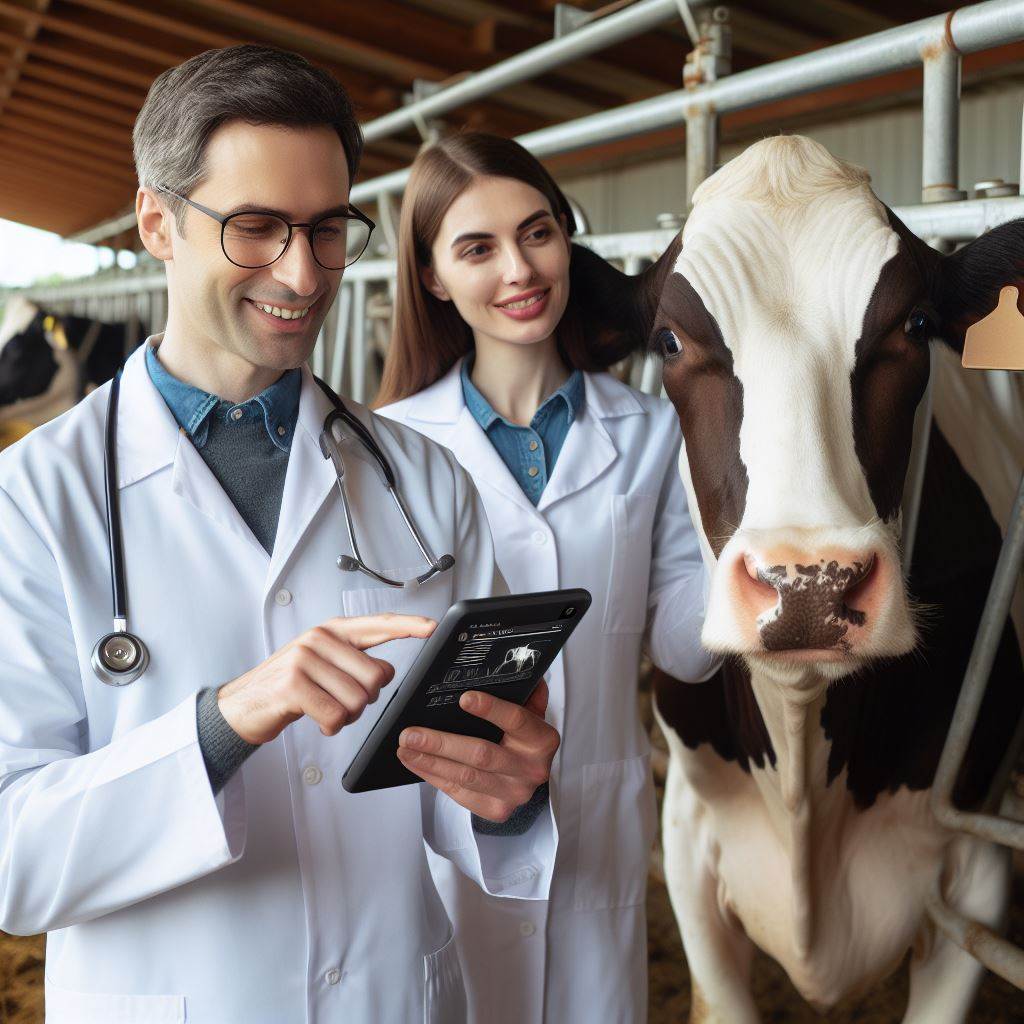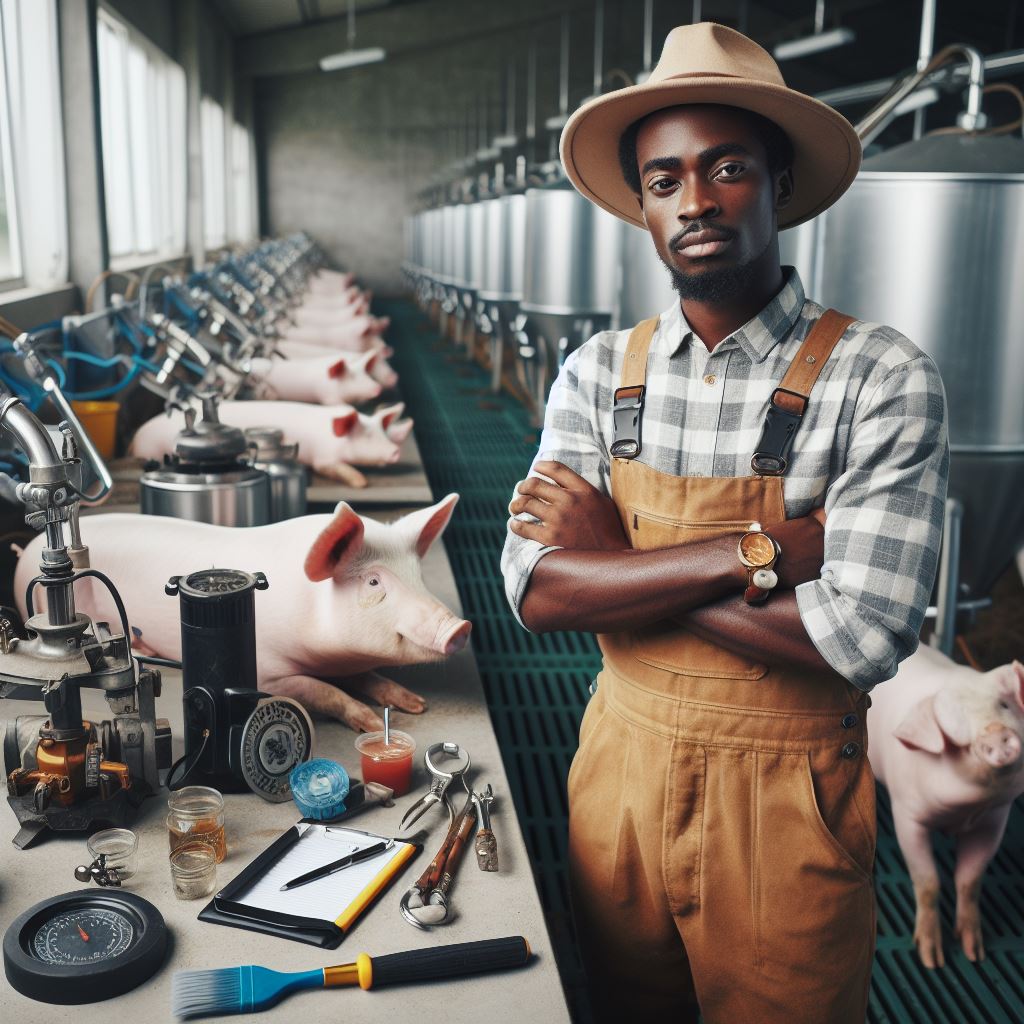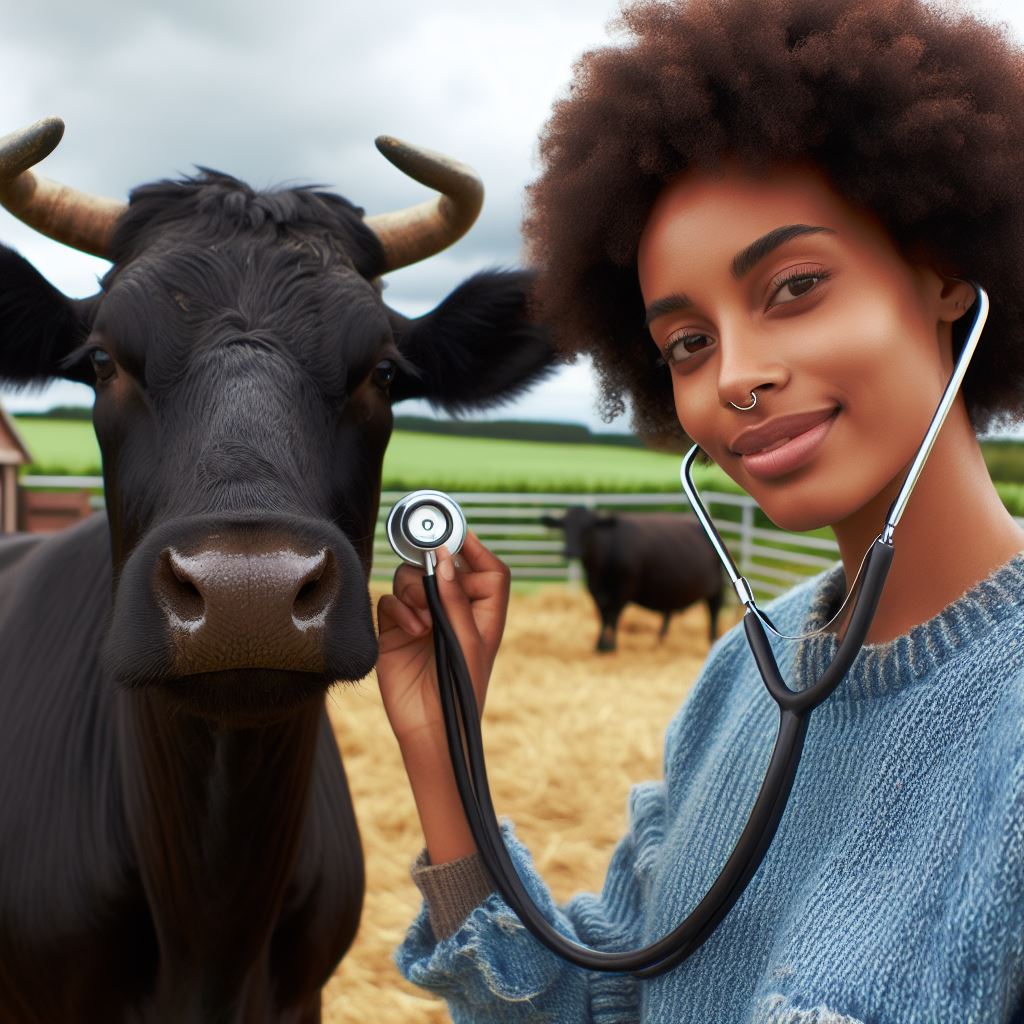Introduction
AI, or artificial intelligence, in the context of livestock farming refers to the utilization of advanced technology to automate and enhance various processes within the industry.
From monitoring animal behavior to optimizing feeding schedules, AI has revolutionized the way farmers manage their herds.
The growing importance of AI in the agricultural industry has catapulted it to the forefront of technological advancements.
With the world’s population increasing and the demand for livestock products rising, farmers are increasingly turning to AI to efficiently meet these demands.
AI systems can analyze vast amounts of data, providing valuable insights and streamlining decision-making processes.
This introduction sets the stage for discussing the role of AI in livestock farming, exploring the opportunities it presents, and addressing potential risks.
AI has the potential to transform the industry by improving productivity, animal welfare, and sustainability.
However, it also brings forth challenges, including ethical considerations, data privacy, and potential job displacement.
Therefore, it is essential to further delve into the topic, examining the specific applications of AI in livestock farming and the benefits it can offer.
By doing so, we can gain a comprehensive understanding of how AI is reshaping the agricultural landscape and the implications it holds for both farmers and consumers.
Read: Optimal Goat Feed: Balancing Nutrition and Health
Opportunities of AI in Livestock Farming
A. Increased efficiency and productivity
AI has the ability to automate tasks such as feeding, monitoring, and disease detection.
Improved accuracy and speed in data processing and analysis.
Artificial Intelligence (AI) presents transformative opportunities in livestock farming by enhancing efficiency and productivity.
Through AI-powered technologies like precision livestock farming, farmers can monitor animal health, optimize feeding schedules, and predict disease outbreaks.
Transform Your Agribusiness
Unlock your farm's potential with expert advice tailored to your needs. Get actionable steps that drive real results.
Get StartedAI-driven data analysis enables real-time decision-making, reducing operational costs and resource wastage.
Automation in tasks such as feeding and monitoring facilitates streamlined processes, saving time and effort.
Additionally, AI applications like predictive modeling contribute to better breeding programs, maximizing livestock yield.
Overall, AI integration in livestock farming not only boosts efficiency but also ensures sustainable practices, benefiting both farmers and the agricultural industry.
B. Enhanced animal welfare
Artificial Intelligence (AI) presents promising opportunities in livestock farming, notably in enhancing animal welfare.
Through AI-powered monitoring systems, farmers can track individual animal health, behavior, and environmental conditions in real-time.
This enables early detection of illnesses, prompt intervention, and personalized care, improving overall welfare.
AI also facilitates precision feeding, optimizing nutrition plans for each animal. Automated systems can manage temperature, ventilation, and lighting, ensuring comfortable conditions.
Furthermore, AI-driven predictive analytics help forecast disease outbreaks and optimize breeding practices.
By prioritizing animal well-being, AI contributes to sustainable and ethical livestock farming practices, benefitting both animals and farmers.
C. Precision livestock farming
AI offers significant opportunities in livestock farming through Precision Livestock Farming (PLF).
PLF utilizes advanced technologies like sensors, machine learning, and data analytics to monitor and manage individual animals or entire herds.
AI can enhance disease detection, optimize feeding strategies, and improve overall farm efficiency. Real-time monitoring of health parameters allows early intervention, reducing mortality rates and veterinary costs.
AI-driven data analysis helps farmers make informed decisions, enhancing productivity and sustainability.
Automated systems can also streamline tasks such as feeding and monitoring, saving time and resources.
Ultimately, AI in PLF contributes to more efficient, sustainable, and humane livestock farming practices.
Read: Best Feed Types for Beef Cattle: A Nutritional Guide
Risks and Challenges of AI in Livestock Farming
In the rapidly evolving landscape of agriculture, integrating AI into livestock farming offers promising opportunities but not without hurdles.
As farmers explore the potential benefits, they must also confront several risks and challenges.
A. Initial Setup Costs
- Investment Hurdles: Acquiring AI systems demands significant financial commitments, from purchasing advanced technologies to integrating them seamlessly into existing farm infrastructure.
- Data Security and Privacy Concerns: Protecting sensitive farm data becomes paramount, necessitating robust measures against cyber threats and unauthorized access.
- Regulatory Compliance: Adhering to privacy regulations adds an additional layer of complexity, demanding farmers’ diligence in meeting evolving legal standards.
B. Skills and Knowledge Gap
- Training Imperatives: Bridging the gap in skills and knowledge is crucial, involving comprehensive training programs for farmers and staff to effectively operate AI technologies.
- Continuous Learning: Staying abreast of AI advancements becomes a continuous journey, requiring proactive efforts to ensure that farmers remain well-versed in the latest developments.
C. Ethical Considerations
- Balancing AI with Human Judgment: Striking the right balance between AI-driven decisions and human intervention is pivotal to avoid over-reliance on technology, ensuring a harmonious coexistence.
- Addressing Ethical Concerns: Ethical considerations surrounding animal welfare, genetic modification, and transparency necessitate careful deliberation to align technological progress with ethical principles.
To sum it up, while AI in livestock farming holds immense promise, navigating the associated risks demands a strategic and proactive approach.
By addressing initial setup costs, bridging the skills gap, and embracing ethical considerations, farmers can unlock the full potential of AI, ushering in a new era of sustainable and technologically-driven agriculture.
Read: Duck Health Management & Disease Control

Case Studies and Examples
- Robotics and AI systems have successfully been implemented in dairy farming to automate tasks.
- Researchers have developed AI algorithms that can detect diseases in livestock more accurately and quickly.
- AI-powered monitoring systems have improved the efficiency of feed management in pig farming.
- In poultry farming, AI has been used to optimize temperature and lighting conditions for better production.
A. Successful Implementation of AI in Livestock Farming
- Farmers are using AI-based sensors to monitor the health and behavior of individual animals in real-time.
- AI-powered drones are utilized to survey livestock pastures, helping farmers identify specific areas for improvement.
- Smart collars fitted with AI technology are providing valuable data on animal movements and grazing patterns.
- AI algorithms are being employed to predict and optimize breeding schedules, leading to increased productivity.
B. Real-World Examples of AI’s Positive Impact on the Industry
- AI has led to improved feed efficiency, reducing costs and environmental impact in livestock farming.
- Through AI-powered data analysis, farmers can make more informed decisions regarding animal health and nutrition.
- AI systems have enhanced the accuracy of yield prediction, enabling better planning and resource allocation.
- By utilizing AI, farmers have achieved a significant reduction in water usage through intelligent irrigation systems.
C. Measurable Benefits Achieved by Adopting AI Technologies
- Increased productivity: AI streamlines farming operations, resulting in higher output and profitability.
- Reduced labor costs: Automation of tasks through AI reduces the need for manual labor.
- Improved animal welfare: AI enables early detection of health issues, leading to better treatment and care.
- Enhanced resource management: AI optimizes resource usage, reducing waste and environmental impact.
D. The Role of AI in Sustainable Farming Practices
- AI-powered precision farming techniques enable targeted use of fertilizers, minimizing runoff and groundwater pollution.
- Smart sensors and AI algorithms help farmers monitor soil conditions, optimizing irrigation and reducing water waste.
- AI-driven climate monitoring systems provide farmers with crucial data for climate-resilient decision-making.
- By promoting efficient resource utilization, AI contributes to long-term sustainability in livestock farming.
As demonstrated by various case studies and examples, AI has positively impacted all aspects of livestock farming.
From successfully implementing robotic systems for automation to maximizing animal welfare and resource management, the measurable benefits of adopting AI technologies are clear.
Showcase Your Farming Business
Publish your professional farming services profile on our blog for a one-time fee of $200 and reach a dedicated audience of farmers and agribusiness owners.
Publish Your ProfileFurthermore, AI plays a significant role in ensuring sustainable farming practices, fostering environmental stewardship and resilience in the face of changing climates.
The future of livestock farming lies in embracing AI as a powerful tool for continued innovation and growth.
Read: 3 Top Smart Feeders for Efficient Cattle Rearing
Conclusion
AI in livestock farming presents both opportunities and risks that need careful consideration.
The opportunities include increased efficiency, improved animal welfare, and enhanced decision-making.
However, there are also risks such as job displacement, data privacy concerns, and potential ethical issues.
It is evident that AI has the potential to shape the future of agriculture by revolutionizing the way we manage livestock farming.
It can bring significant benefits to farmers, consumers, and the industry as a whole.
To fully capitalize on the potential of AI in livestock farming, further research and exploration of its applications are necessary.
It is crucial to continue studying and developing AI technologies to maximize their positive impacts.
However, responsible adoption and monitoring of AI technologies are essential.
It is important to ensure that AI systems are developed and deployed ethically, with proper safeguards in place to address the associated risks.
By embracing AI in livestock farming and leveraging its potential, we can create a more sustainable and efficient industry while addressing the challenges we face in agriculture today.
Let us take the necessary steps to harness AI’s power while ensuring responsible implementation and monitoring.




